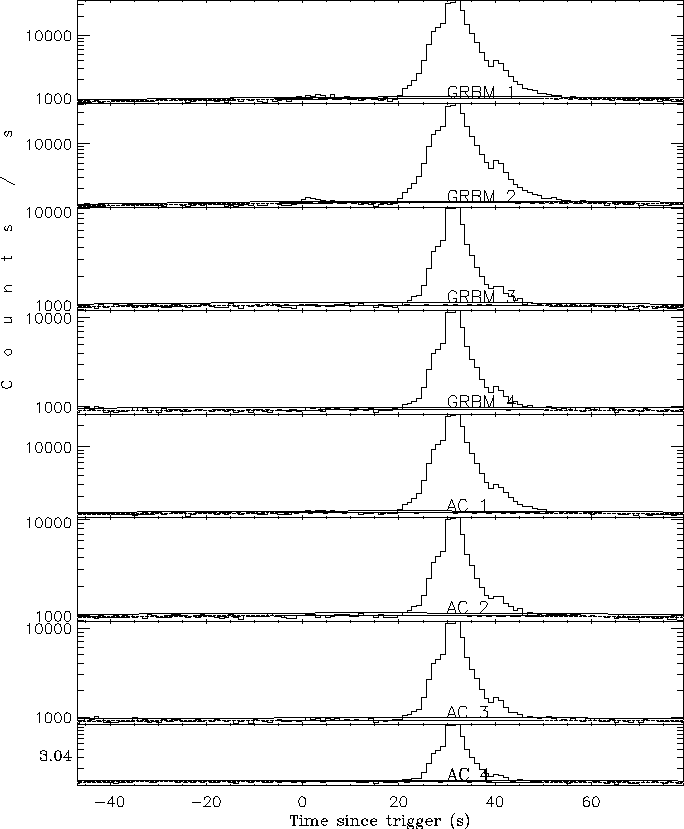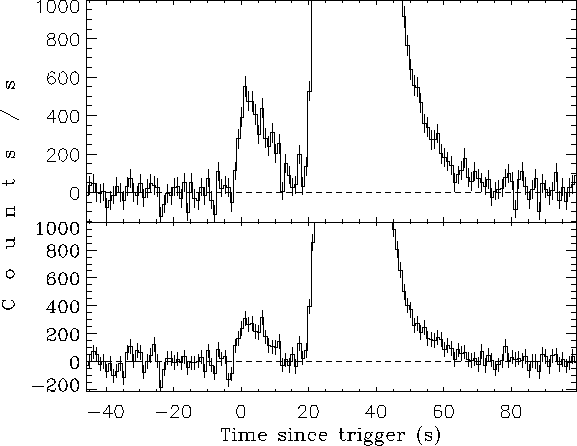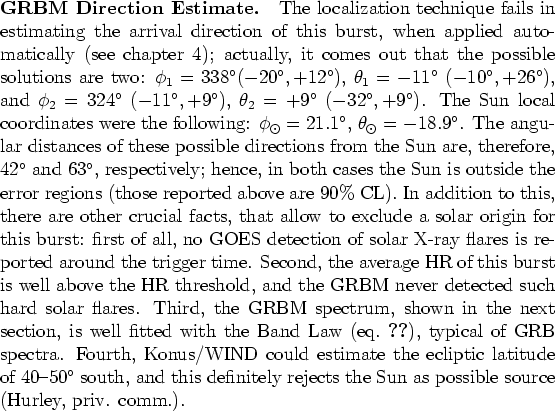 |
![[*]](crossref.png) ).
Unfortunately, no HTR data are available for this burst, because it
occurred just 48 s after the passage over the SAGA; hence, the on-board
logic was not ready yet to be triggered.
The burst temporal structure consists of a sort of precursor, starting
at the trigger time, taken as zero-time (fig.
).
Unfortunately, no HTR data are available for this burst, because it
occurred just 48 s after the passage over the SAGA; hence, the on-board
logic was not ready yet to be triggered.
The burst temporal structure consists of a sort of precursor, starting
at the trigger time, taken as zero-time (fig. ![[*]](crossref.png) ),
lasting
),
lasting  |

[4]
------------------------------------------------------------------ Sun R.A. and Dec.: 52.6 19.0 Sun LS phi : 21.1 Sun LS theta: -18.9 LSra: 157.1 64.5 337.1 244.5 LSde: -21.8 -6.4 21.8 6.4 lkGRB[0] #LSs: 4 Good HRR: 6 Trigger Time (UTC): 41137.7 16 May 1998 11:23:37 Sun visib.: 2 Earth Phi: 194.4 Theta: 1.7 LS E-elev: 9.2 99.1 38.1 -51.8 LS Ecos : 0.249 -0.968 -0.249 0.968 Nsig(trg): 9.5 10.5 2.1 3.0 7.0 7.0 0.9 2.2 Nsig(pfl): 1484.7 1681.2 323.9 396.3 991.4 1155.2 230.9 265.3 Bkg lev. : 721 808 911 850 963 924 1043 1175 ChiSq R. : 1.193 2.272 1.197 1.028 1.259 1.649 1.090 1.182 Peak fl. : 39866 47790 9776 11554 30766 35114 7456 9094 Error : 202.0 221.2 103.7 111.6 178.7 190.4 92.5 101.7 Fluence : 244814 300301 59190 68443 184368 214181 42790 51890 Error : 521 576 295 307 466 496 273 296 Dur (s) : 58.00 61.00 22.00 29.00 Abundance: 48 49 22 29 H. Ratio : 0.753 0.713 0.723 0.758 HR Ratio : 1.056 1.041 0.993 0.986 0.941 0.954 HR W-ave : 0.732 +/- 0.002 ------------------------------------------------------------------
One might ask why BATSE was not triggered by such an impressive burst, given that its sensitivity is better than GRBM's. By looking into the DISCLA data from BATSE, that are continuous ratemeter data and, therefore, are the analogous of the GRBM 1 s ratemeter data, one discovers that the burst occurred during a data gap, lasting about 27 min, probably connected with the CGRO passage over the SAGA. This explains why BATSE did not see this burst.